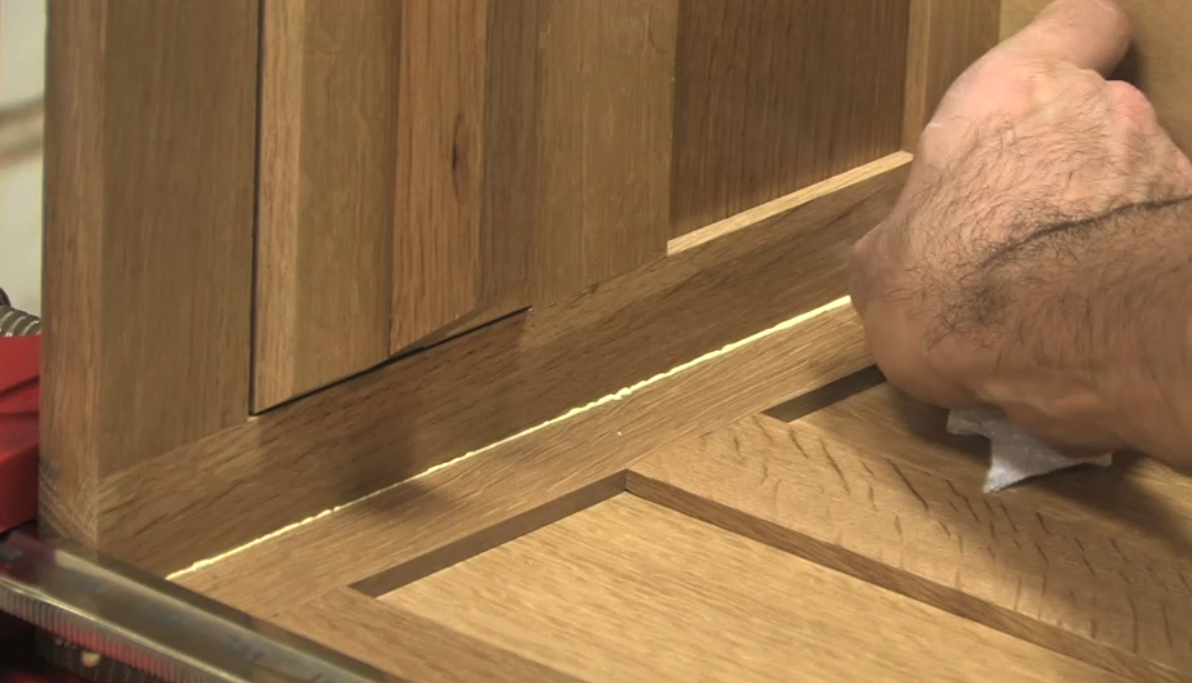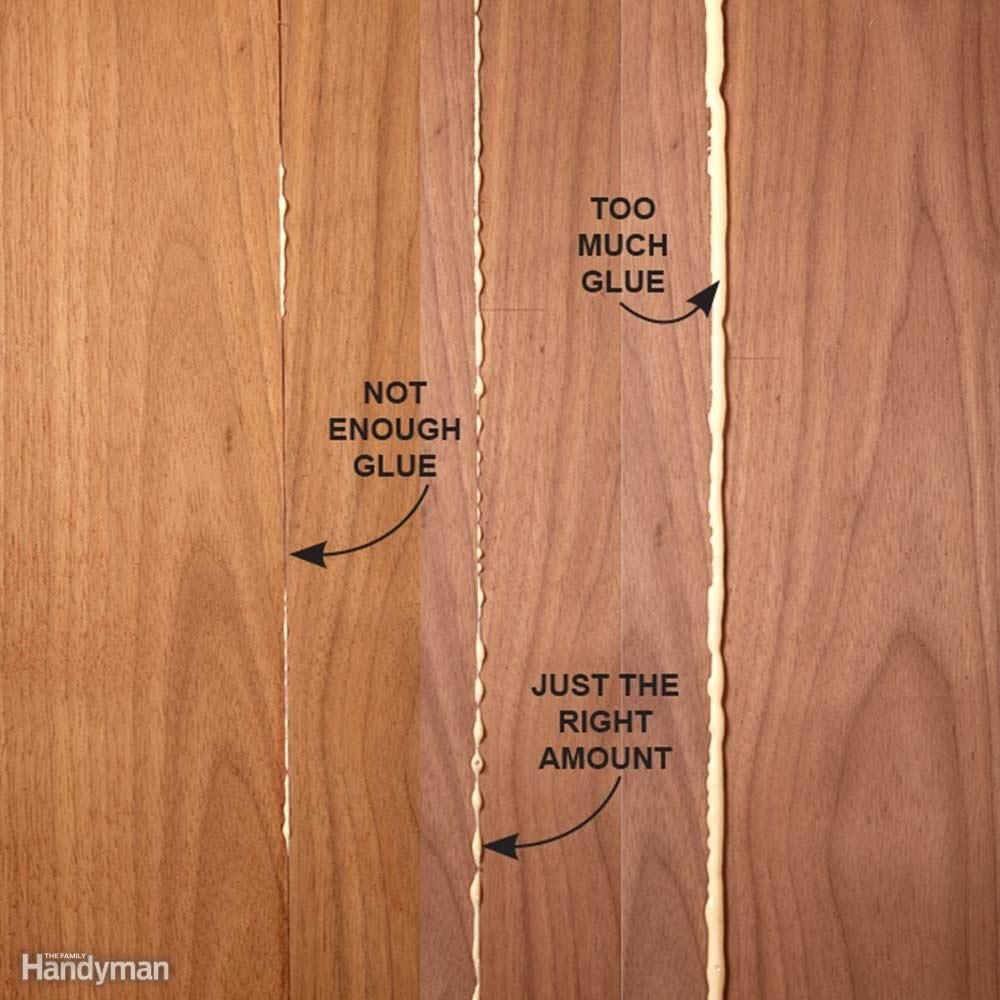When it comes to woodworking projects, using wood glue is essential for creating strong and durable bonds. But have you ever wondered, “How much wood glue is enough?” Well, in this article, we’ll dive into this question and provide you with some helpful guidelines and tips. So, whether you’re a beginner or an experienced woodworker, keep reading to find out the perfect amount of wood glue to use for your next project.
Now, you might be thinking, “Why is the amount of wood glue important?” Let me tell you! Using too little glue might result in weak joints that won’t hold up over time. On the other hand, using too much can lead to messy excess glue and potentially compromise the appearance of your project. Striking the right balance is crucial, and we’re here to help you figure it out!
But before we get into the nitty-gritty details, let’s start with the basics. Understanding the factors that influence how much glue you should use will set you on the path to success in your woodworking endeavors. So, let’s dive in and uncover the secrets of achieving the perfect amount of wood glue for your projects!

How Much Wood Glue is Enough?
Wood glue is an essential tool for any woodworking project, but many people often wonder how much glue is enough to ensure a strong and durable bond. Finding the right amount of wood glue can be a bit tricky, as using too little may result in a weak bond, while using too much can lead to messy and excessive squeeze-out. In this article, we will provide you with detailed information and expert tips on how to determine the appropriate amount of wood glue to use for different woodworking applications.
Factors to Consider when Determining the Amount of Wood Glue
When it comes to deciding how much wood glue is enough, several factors come into play. These factors include the type of wood you are working with, the size and complexity of the project, and the application method used. Let’s delve into each of these factors in more detail:
Type of Wood
The type of wood being glued together plays a significant role in determining the amount of glue you should use. Porous and open-grained woods, such as oak or mahogany, will require more glue to fill the gaps and ensure a strong bond. On the other hand, dense and close-grained woods, like maple or cherry, require less glue since their surface allows for better adhesion. Consider the characteristics of the wood you are working with when determining the amount of glue required.
Tip:
If you are unsure about the porosity of the wood, it is always better to err on the side of caution and apply a bit more glue. It is easier to clean up excess glue than to deal with a weak bond.
Size and Complexity of the Project
The size and complexity of your woodworking project also influence the amount of glue needed. For small joints or simple butt joints, a thin layer of glue evenly spread across the surfaces is usually sufficient. However, for larger joints or intricate joinery methods, such as dovetails or mortise and tenon joints, you may need to apply more glue to ensure every crevice is properly covered.
Tip:
Remember to consider any additional reinforcement, such as screws or nails, that may be used in conjunction with the wood glue. This will affect the amount of glue needed, as the mechanical fasteners provide added strength to the joint.
Application Method
The way you apply the wood glue can affect the amount required. If you are using a brush or roller, you may need to use a bit more glue to ensure even coverage across the surface. However, if you are using a glue bottle with a precision tip or a glue syringe, you can control the amount more precisely and minimize excess glue.
Tip:
A good rule of thumb is to apply enough glue to create a thin, even layer across the entire surface. The glue should slightly squeeze out when clamping the pieces together, but excessive squeeze-out can be messy and difficult to clean up.
Expert Tips for Using the Right Amount of Wood Glue
1. Conduct a Dry Fit
Before applying any glue, it is advisable to conduct a dry fit of your project. This involves assembling the pieces without glue to ensure a proper fit. By doing this, you can assess how the pieces align and make any necessary adjustments before applying the adhesive. This step helps prevent wasting glue and ensures a better outcome.
2. Test with Scrap Pieces
If you are unsure about the amount of glue to use, it is always a good idea to test it on scrap pieces of wood first. This allows you to observe how the glue interacts with the wood and how it spreads when pressure is applied. Testing on scrap wood will give you a better understanding of how much glue is needed for your specific application.
3. Use Clamping Pressure to Control Excess Glue
Applying the right amount of clamping pressure can help control excessive squeeze-out. By applying enough pressure, you can encourage the excessive glue to squeeze out of the joint, making cleanup easier. However, be cautious not to overdo it, as excessive pressure can lead to misalignment or damage to the project.
4. Clean Up Excess Glue Immediately
If you find that you have applied too much glue and excessive squeeze-out has occurred, it is crucial to clean it up immediately. Wood glue is much easier to remove when it is still wet. Use a damp cloth or sponge to wipe away the excess glue from the surface and joints. Leaving dried glue on the wood can interfere with staining or finishing later on.
5. Follow Manufacturer’s Recommendations
Every brand of wood glue may have slightly different guidelines for how much to use. It is always recommended to read and follow the manufacturer’s instructions on the packaging. They usually provide specific guidelines on application methods and the recommended amount of glue for optimal bonding strength.
Conclusion:
When determining how much wood glue is enough, it is important to consider factors such as the type of wood, the size and complexity of the project, and the application method. By taking these factors into account and following expert tips, you can ensure a strong and durable bond in your woodworking projects. Remember to conduct a dry fit, test with scrap pieces, use clamping pressure to control excess glue, clean up immediately, and follow the manufacturer’s recommendations. With the right amount of wood glue, your woodworking projects will be built to last.
Key Takeaways: How Much Wood Glue is Enough?
- Using too little wood glue can result in weak bond and joint failure.
- It’s important to apply an even layer of glue to ensure proper adhesion.
- Follow the manufacturer’s instructions for recommended glue amounts.
- For small projects, a thin coat of glue is usually sufficient.
- For larger or load-bearing projects, use a generous amount of wood glue for stronger bonds.
Frequently Asked Questions
Welcome to our FAQ section on wood glue usage! Below, we have compiled some common questions and answers to help you determine how much wood glue is enough for your projects. Read on to find out more!
Q: Can I use too much wood glue?
Using too much wood glue can actually be detrimental to your project. When applying an excess amount of glue, it may result in messy, uneven joints, or excessive squeeze-out. Additionally, excess glue can take longer to dry, which can prolong your project’s completion time. It is important to follow the manufacturer’s recommendations and apply an appropriate amount of glue for the best results.
The goal of using wood glue is to create a strong bond between the surfaces being joined. Applying a thin, even layer of glue on both surfaces is typically sufficient. Remember, it’s better to have a little too little glue than too much, as excessive glue can cause more harm than good.
Q: How can I determine the right amount of wood glue to use?
When determining the right amount of wood glue to use, it’s important to consider the size and nature of the project. One way to estimate the amount of glue needed is by calculating the adhesive’s coverage rate, which is typically provided by the manufacturer. This coverage rate will give you an idea of how much glue is needed per square inch or square foot of surface area.
Another helpful tip is to start with a conservative amount of glue and assess the coverage. You can always add more if needed. It’s better to err on the side of caution and gradually apply additional glue as necessary. Remember, you can’t remove excess glue once it’s applied, so it’s wise to start with a smaller quantity and increase as needed.
Q: Is there a specific type of wood glue that requires more or less application?
The amount of wood glue required can vary depending on the type of wood glue you are using. Different types of wood glue have different viscosities and drying times, which can impact the amount needed. For example, some thicker wood glues may require less application compared to more runny glues.
It is always recommended to follow the manufacturer’s instructions when it comes to applying their specific type of wood glue. The instructions will often indicate the ideal application method and quantity for optimal performance. Make sure to read and understand the instructions before using any wood glue to achieve the best results.
Q: Can I substitute wood glue with other adhesives?
While wood glue is specifically designed for bonding wood surfaces, there are other adhesives available that can be suitable for certain projects. However, it is essential to choose the right adhesive for your specific application. Some substitutes for wood glue include epoxy, polyurethane, and cyanoacrylate (super glue).
Before substituting wood glue with another adhesive, consider factors such as the material being bonded, the strength required, and the drying time. Always follow the manufacturer’s instructions for the chosen adhesive and ensure it is compatible with your project’s materials for the best results.
Q: What should I do if I accidentally use too much wood glue?
If you accidentally use too much wood glue and excess squeeze-out occurs, there are steps you can take to remedy the situation. First, wipe away any excess glue using a damp cloth or sponge before it dries. If the glue has already dried, carefully scrape off the excess glue using a chisel, putty knife, or other suitable tool.
If the excess glue has left behind visible residue or raised areas on the surface, you may need to sand it to achieve a smooth finish. Use sandpaper with a fine grit to gently sand away any glue residue, being careful not to damage the surrounding wood. Once the surface is smooth, you can proceed with finishing or further construction as desired.

What You Need to Know About Glue | WOODWORKING BASICS
Summary
So, how much wood glue is enough? It depends on the size of your project and the type of wood you’re working with. For small projects, a little dab will do, but for larger or heavier pieces, you’ll need to use more. Just remember to spread the glue evenly and let it dry completely before moving or using the glued pieces. And always follow the instructions on the glue bottle for the best results.
In conclusion, when it comes to wood glue, it’s better to use too much than too little. You want a strong and secure bond that will last for a long time. So, don’t be afraid to use a generous amount and make sure to let it dry properly. Happy woodworking!
